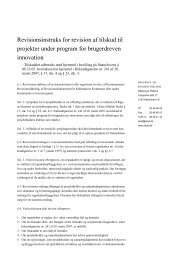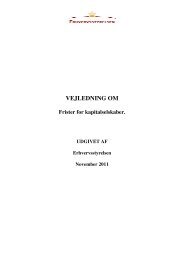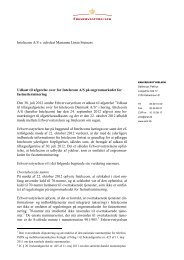Risk-Based Approach â Guidance for Money Service Businesses
Risk-Based Approach â Guidance for Money Service Businesses
Risk-Based Approach â Guidance for Money Service Businesses
You also want an ePaper? Increase the reach of your titles
YUMPU automatically turns print PDFs into web optimized ePapers that Google loves.
<strong>Risk</strong>-<strong>Based</strong> <strong>Approach</strong> – <strong>Guidance</strong> <strong>for</strong> <strong>Money</strong> <strong>Service</strong> <strong>Businesses</strong> - July 2009 particular MSB. The fact that policies and procedures, in accordance to the risk levels, may be appliedflexibly to different products, services, customers and locations does not mean that policies and proceduresneed not be clearly defined.60. Basic minimum AML requirements can coexist with a risk-based approach. Indeed, sensibleminimum standards, coupled with scope <strong>for</strong> these to be enhanced when the risk justifies it, should be at thecore of risk-based AML/CFT requirements. These standards should, however, be focused on the outcome(combating through deterrence, detection, and reporting of money laundering and terrorist financing),rather than applying legal and regulatory requirements in a purely mechanistic manner to every customer.Principle Three: Design of a supervisory framework to support the application of the risk-basedapproach61. Where competent authorities have been assigned responsibility <strong>for</strong> overseeing MSBs‟ AML/CFTcontrols, countries may wish to consider whether such authorities are given the necessary authority toimplement a risk-based approach to supervision. Barriers to this may include inappropriate reliance ondetailed and prescriptive requirements in the regulator's rules. These requirements may, in turn, stem fromthe laws under which the regulator gained its powers.62. Where appropriate, regulators should seek to adopt a risk-based approach to the supervision ofMSBs‟ controls to combat money laundering and terrorist financing. This should be based on a thoroughand comprehensive understanding of the types of financial activity undertaken and the money launderingand terrorist financing risks of those activities. Regulators will probably need to prioritise resources basedon their overall assessment of where the risks are, which institutions are most exposed to them, and otherfactors.63. Regulators with responsibilities other than those related to AML/CFT will need to consider theserisks alongside other risk assessments arising from the regulator's wider duties. Similarly, ef<strong>for</strong>ts should bemade to ensure appropriate cooperation between competent authorities, which supervise similar activities.64. Such risk assessments should help the regulator choose where to apply resources in itssupervisory programme, with a view to using limited resources to achieve the greatest effect. A riskassessment may also identify that the regulator does not have adequate resources to deal with the risks 7 . Insuch circumstances the regulator may need to obtain additional resources or adopt other strategies tomanage or mitigate any unacceptable residual risks.65. The application of a risk-based approach to supervision requires that regulators‟ staff be able tomake principle-based decisions in a similar fashion as would be expected from staff of a MSB that hasadopted a risk-based approach. These decisions will cover the adequacy of MSB‟s arrangements to combatmoney laundering and terrorist financing. As such, a regulator may wish to consider how best to train itsstaff in the practical application of a risk-based approach to supervision. Supervisory staff will need to bewell-briefed as to the general principles of a risk-based approach, its possible methods of application, andwhat a risk-based approach looks like when successfully applied by MSBs.Principle Four: Identifying the main actors and ensuring consistency66. Countries should consider who the main stakeholders are when adopting a risk-based approach tocombating money laundering and terrorist financing. These will differ between countries. Thought shouldbe given as to the most effective way to share responsibility between these parties, and how in<strong>for</strong>mation7See FATF Recommendation 30.© 2009 FATF/OECD - 17
















